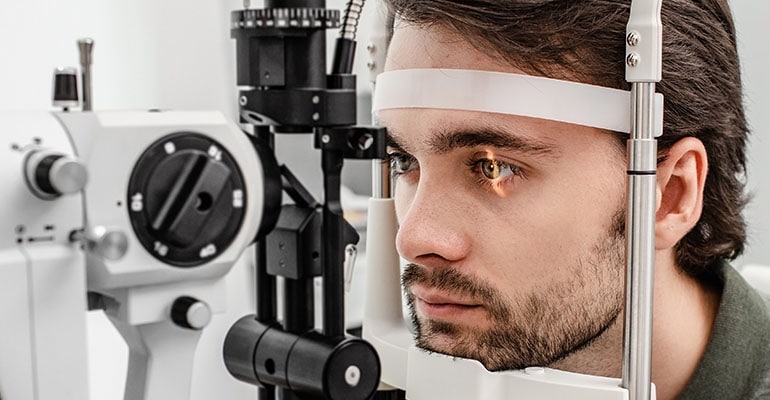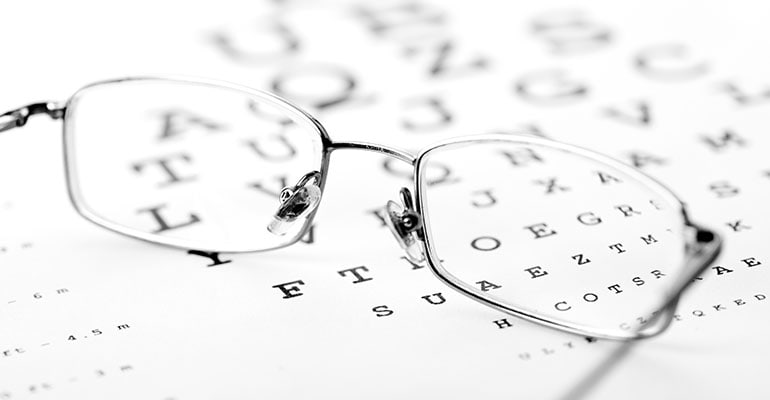How to Know if You Need Glasses | Identifying the Signs
Apr 25, 2024

Understanding when you may need glasses is key to maintaining good vision health. Vision changes can occur gradually, and people might not always recognize the signs that their eyesight isn't as sharp as it once was. Common indicators that glasses might be necessary include experiencing blurred vision, frequent headaches, and having trouble seeing objects at a distance or up close.
Glasses serve not only to correct vision problems but also to protect the eyes from further strain or damage. Some individuals may start to find themselves squinting or experiencing eye fatigue, especially when reading, working on the computer, or driving. These can be signs of underlying vision issues such as nearsightedness, farsightedness, or astigmatism.
Eye examinations by a professional are crucial for diagnosing vision impairment. An eye doctor can perform a series of tests to determine whether someone needs glasses, and if so, what prescription strength is necessary to enhance their vision. Early detection and correction with the appropriate eyewear can improve quality of life and prevent the progression of vision problems.
Recognizing Common Vision Problems
Vision problems can present in various ways, affecting how individuals see the world around them. Early detection can significantly enhance the effectiveness of corrective measures like glasses.
Symptoms of Nearsightedness and Farsightedness
Nearsightedness, or myopia, is when distant objects appear blurry while close objects are clear. It occurs when the eye's shape focuses images in front of the retina, instead of directly on it.
- Common symptoms include:
- Difficulty seeing road signs or the blackboard.
- Strain when gazing at objects far away.
Farsightedness, or hyperopia, is the opposite: nearby objects are blurry while distant objects are clear. This condition arises when the eye focuses images behind the retina.
- What to look for:
- Eyestrain or discomfort during close-up tasks, such as reading.
- Eyestrain or discomfort during close-up tasks, such as reading.
Identifying Astigmatism and Presbyopia
Astigmatism causes overall blurry vision due to an irregularly shaped cornea or lens, affecting how light is focused on the retina. Individuals may experience:
- Poor night vision.
- Difficulty with focus at all distances.
- Headaches due to eye strain.
Presbyopia is the age-related difficulty in seeing close objects clearly. It's a natural part of aging that often arises after the age of 40.
- Symptoms include:
- Needing to hold reading material farther away.
- Problems with small print in dim light.
Detecting Cataracts and Other Age-Related Issues|
Cataracts involve the clouding of the eye's natural lens and are a common age-related issue. Signs of cataracts can range from:
- Mild blurry sight to significant vision loss.
- Increased difficulty with vision at night.
- Seeing halos around lights might be particularly noticeable while driving.
Other age-related vision changes, such as age-related macular degeneration (AMD) or glaucoma, exhibit different symptoms and require a professional diagnosis. Regular eye exams are crucial for monitoring one's eye health and catching issues early on.
Signs You Might Need Glasses
Awareness of specific symptoms can help determine if one might require corrective eyewear. These symptoms, such as blurred vision and increased instances of eye strain, are indicators that a visit to an eye care professional might be necessary.
Frequent Headaches and Eye Fatigue
Individuals experiencing regular headaches and eye fatigue could be showing signs of eye strain, often caused by the overexertion of the eyes' focusing muscles. This may occur from attempting to compensate for vision imperfections, and glasses can help in alleviating the strain.
Struggling with Night Vision and Glare
Those who find themselves squinting or experiencing difficulty with night vision may be suffering from poor night vision, also referred to as night blindness. Moreover, an increased sensitivity to light or noticing halos around light sources can indicate a susceptibility to glare.
Squinting and Difficulty with Visual Acuity
Squinting is a common reaction when attempting to improve visual acuity, particularly when reading fine print or discerning details at a distance. Individuals may squint in an effort to reduce light intake and sharpen an image, a telltale sign that corrective lenses might be necessary.

The Importance of a Comprehensive Eye Exam
A comprehensive eye exam is crucial for detecting eye health problems and determining the need for prescription glasses. It's not just about assessing if you can see clearly; it's a detailed evaluation of your eye health and vision.
Understanding the Eye Exam Process
A comprehensive eye exam involves a series of tests conducted by an optometrist or ophthalmologist. These tests assess not only your visual acuity but also the overall health of your eyes. During the exam, pupils are often dilated to give the eye doctor a clear view of internal structures, such as the optic nerve and retina. This process helps in detecting any underlying conditions that could contribute to eye strain or other vision problems. Patients may learn about their need for glasses if vision correction is necessary.
When to Seek an Eye Doctor's Advice
It is recommended to have an annual eye exam to monitor and maintain optimal eye health. However, if you're experiencing symptoms such as frequent headaches, blurred vision, or eye strain, it's important to visit an eye doctor promptly. These can be signs that your vision has changed and you may need prescription glasses. Additionally, regular eye exams become more important as one age or if there's a family history of eye conditions.

Choosing the Right Glasses and Lenses
Choosing the proper eyewear involves understanding the myriad options available and assessing what fits your lifestyle and optical needs.
Selecting Frames and Lens Types
When selecting frames, one should consider face shape, frame material, and lifestyle. Metal frames might offer sleekness and are durable, while plastic frames are lightweight and can come in a variety of colors. The lens type, be it single vision for a consistent prescription or progressive lenses for multiple focal points, should align with the individual's visual requirements.
For the lenses themselves, high-index lenses are an option for those with a stronger prescription, as they can be thinner and lighter than traditional lenses. There's an array of specialty lenses such as reading glasses for close-up work and computer glasses designed to reduce eye strain from digital screens.
Understanding Lens Coatings and Features
Modern lenses can be customized with coatings and features to enhance visual clarity and comfort. An anti-reflective coating can drastically reduce glare and is almost a must-have for most corrective eyewear users. For those spending considerable time in front of screens, lenses can have a blue light filter to mitigate the potentially harmful effects of prolonged exposure to digital blue light.
Some lenses also boast UV protective coatings, which is imperative when outdoors. Scratch-resistant coatings can extend the lifespan of eyeglasses, making them a wise investment.
Options for Contact Lenses and Surgery
While eyeglasses are a common corrective measure, contact lenses offer an invisible, glasses-free method of vision correction. They require meticulous care and may not be suitable for every type of vision problem. Alternatives such as laser eye surgery can provide a long-term solution for certain candidates. This surgery reshapes the cornea to correct vision, potentially eliminating the need for corrective lenses. However, a thorough consultation with an ophthalmologist is necessary as procedures like LASIK are not universal fixes and are dependent on factors like the health of the individual's retina and overall eye condition.
Lifestyle Adjustments and Eye Care Tips
Addressing digital screen use and instituting good eye health habits are essential for reducing eye strain and maintaining ocular health. These adaptations prevent discomfort and visual issues associated with prolonged digital device use.
Adapting to Digital Screen Use
In the digital age, individuals spend significant time in front of screens, leading to digital eye strain. To counter this, one can use prescription computer glasses specifically designed to reduce glare and filter blue light. These glasses are tailored to an individual's needs, offering protection against the symptoms of computer vision syndrome, which typically include fatigue, dry eyes, and watery eyes. Moreover, following the 20-20-20 rule—taking a 20-second break to view something 20 feet away every 20 minutes—can alleviate eye strain and encourage clear vision.
Maintaining Good Eye Health Habits
Ergonomics plays a pivotal role in ocular health. Positioning digital devices at an arm's length away and at eye level minimizes neck, back, and shoulder strain. Additionally, adjusting the brightness and contrast of visual displays to align with surrounding light conditions can prevent eye pain. Regular eye exams ensure that any vision changes are addressed promptly with updated prescriptions for glasses or contact lenses. Implementing these strategies alongside hydration and a proper diet supports overall eye health.